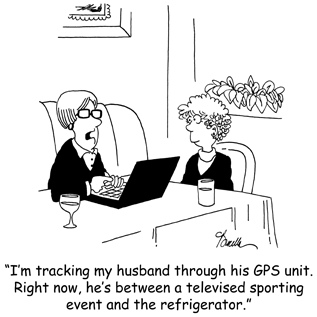2.6 Communicating on the move
Advances in digital technology have, in a very short space of time, revolutionised the way many of us live our lives. Nowhere is this more evident than in our ability to communicate as we travel. Below I’ll share with you a personal example that highlights some of the changes, and some of the opportunities and problems these changes have created.
In the 1980s my employers of the time set up an email account for me with a commercial email provider called CompuServe. This required me to use a modem to connect my computer to a telephone line and dial one of a set of specific phone numbers so that my email could be transmitted. This was fine if I was in the office, but more complicated when travelling as very few hotels made telephone sockets available to customers. As a result, my travelling kit soon contained a selection of small screwdrivers for dismantling hotel telephones, and a set of wires, crocodile clips and pliers so I could wire directly into the phone system. Of course, this was all done at my own risk and without the knowledge or approval of the hotels, and I am not recommending it!
In those days, even when I did manage to get online, email transmission was very slow and expensive. Nowadays I have a mobile phone with which I can send and pick up emails quickly and cheaply wherever I am (without the need to dismantle a fixed-line telephone!). As well as email, my phone enables me to communicate in several other ways – instant messaging and social networking, for example, not to mention voice calls. I can also use the built-in global positioning system (GPS) to find out where I am, and even plot my location on a website to let my friends and family see where I am (or at least see where my phone is).
This last feature was very useful when my wife and I tried to find our son’s new flat for the first time, as the last mile of the journey was rather more complicated than expected. Our son could check online and see exactly where we were, and he could also talk to us and guide us to the right place. Yet a service like this also has some disadvantages – most importantly, I need to remember to turn it off if I don’t want people to know where I am. A few months later, I realised on returning home after buying my wife a birthday present that the same service will have showed that I spent 20 minutes in a jeweller’s shop. I don’t think she noticed, or if she did she didn’t allow it to spoil the surprise. However, it’s not hard to imagine other circumstances in which I might not want my location to be publicised, even to my family and friends (Figure 7).

